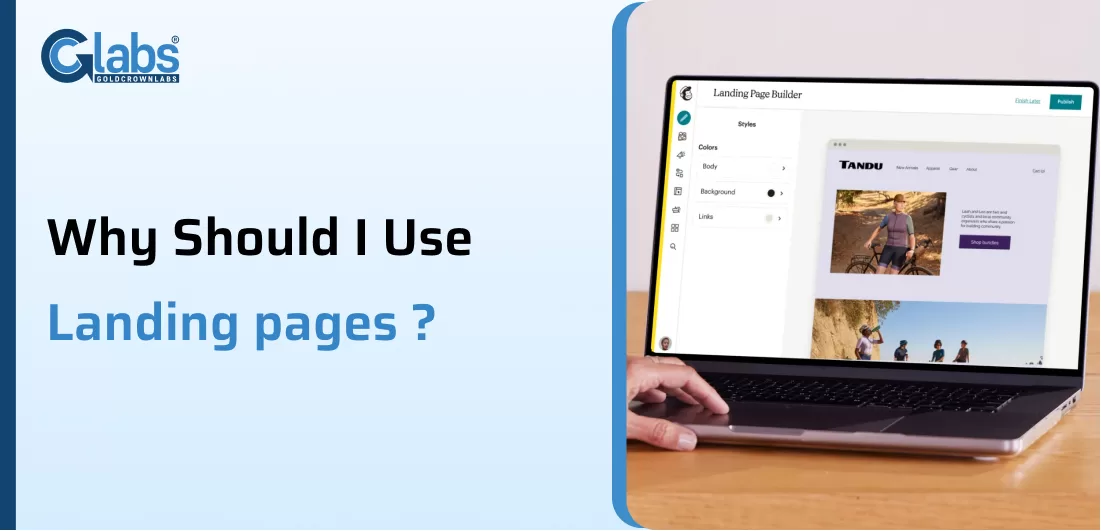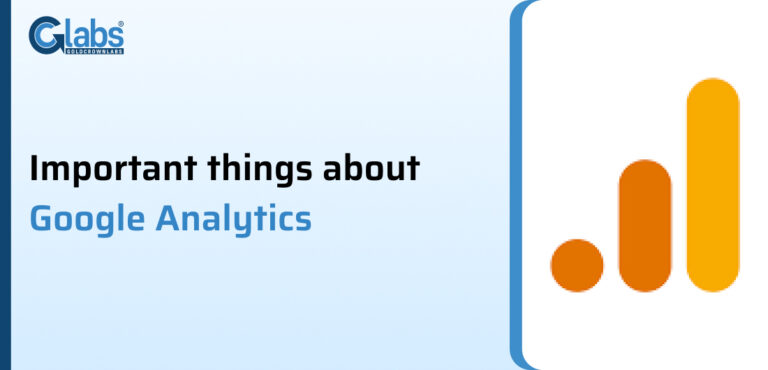Landing pages, as opposed to web pages, which frequently have multiple goals and encourage research, are created with a single emphasis or purpose, known as a call to action.
Your landing page enables you to exchange contact information for a trade, unique offer, piece of information, or transaction.
Although the homepage is gorgeous and showcases the business, customers won’t necessarily buy something from this page. And it is the key idea. This customer’s landing page has a completely different function. Everything about it works hard to convert these visitors into customers, especially when paired with slick advertisements that highlight a single offer. It is converting the traffic the brand already receives better. That is how effective landing pages are!
A landing page that is successful will achieve its objective by persuading a potential customer that it is desirable to exchange their personal information for whatever it is you are providing. If your landing pages are available through a general search or your company website, a prospective customer is more likely to locate them.
There’s no reason to limit yourself to having one landing page, let alone one landing page at a time. In fact, marketing professionals may advise you to keep a number of landing pages that are tailored to different customer segments.
A landing page is a fantastic method to increase visitors, boost SEO, and establish your brand. A digital marketing campaign’s landing pages are a crucial component because 68% of B2B companies utilise them to generate leads for subsequent conversions.
An examination of the efficiency of landing pages uncovered some fascinating data. Only 10.5% of conversions took place, but 68.2% of those conversions came from landing pages with more than five call-to-action buttons. The conversion rate for landing pages with just one call to action, however, was 13.5%.
With the help of a landing page, you can direct the reader to take a particular action, giving you more control. It concentrates on precise, time-bound objectives that produce excellent results. It strengthens your credibility by demonstrating to your client that you have their best interests at heart through straightforward messaging and a touch of social proof.
With a consistent look, tone, style, and language, landing pages help to strengthen your brand so that even if visitors don’t convert, they will still remember you in the future.
You might be wondering why landing pages generate more visitors at this point. The answer is really quite easy! Since they are concentrated on a single objective or call to action by providing details about a specific offer or item, landing pages increase traffic conversion.
Users are kept from getting lost in a sea of links that divert attention from the page’s main goal by its clear layout and simple navigation. When an effective advertisement highlights a particular offer, it increases the likelihood that visitors to a customised landing page will become customers.
Additionally, you make sure that your PPC investment is more fruitful because you already paid for this click, and a landing page aids in making it worthwhile. By using the proper kind of landing page, you may raise the likelihood of conversions even further. There is a wide range of variation available, depending on the particulars of the business. Let’s examine the different types of landing pages and their purposes.
Lead-generation pages, also known as “lead gen” or “lead capture” pages, are designed primarily to gather leads through the use of a data collection form.
These pages can be used in a variety of situations, but they are most frequently used in the middle of the sales funnel when customers are assessing your offerings and on the verge of deciding whether to convert or walk away. These pages do this by simultaneously presenting a request and a reward to the visitor. The information you request in your form is the reward, which is the specific offer you are promoting to gather leads. The product you are promoting must, however, be worthwhile for the customer to give you their information and join your mailing list.
Click-through landing pages, in contrast to lead-generation pages, do not demand the completion of a form and instead serve as a straightforward intermediary between the advertisement and the page the visitor is intended to be directed to. It includes a succinct summary of what the visitor discovered in the advertisement as well as a clear call to action (CTA) that links to the intended outcome. For instance, it is frequently used to link an advertisement to a shopping cart.
A squeeze page is used to collect data, much like a lead-generation page, but its sole objective is to collect email addresses so that potential leads can be added to a mailing list. They have brief, straightforward landing pages with strong headlines and little else. Thanks to a clear call to action, the reader will know exactly what to anticipate from the click-through. In addition to the short form, there should be a button that allows the reader to exit if they so choose and a link that leads them to the next step.
A sales page’s purpose is to persuade visitors to make a purchase, which calls for tact and a thorough grasp of your clients’ needs and where they are in the sales process. To encourage people to click the “Buy” button, it must include a thorough pitch that explains the value proposition. It is one of the most significant and challenging instances of a landing page.
The length of the page largely depends on your product and how much you need to say to convey to your audience why it is valuable. Whatever the length, there must be a thorough pitch that amply conveys this value in order to persuade the audience to click the button and make the purchase.
Splash pages are perhaps the most straightforward kind of landing page and may be utilised at any stage of your sales funnel. Usually an announcement or a simple “yes” or “no” request, they frequently only have a few words of prose, one or two bold graphics, and very simple language. They can ask your reader to verify their age or choose their preferred language before allowing them to visit your website. Before entering your website, they only serve to provide very basic information to visitors; they are not designed to gather information or produce leads.
You might believe that infomercials are a remnant of late-night television advertising in the 1990s, yet many companies effectively adopt their sales approaches into their digital strategy, especially in the form of niche landing sites. Unlike squeeze or lead-generation pages, which are distinguished by their succinctness, infomercial landing pages give your viewers a long, intricate story while employing content that is reminiscent of the emotional and agitated mannerisms of those late-night sales experts. The goal is to encourage people to keep scrolling and make a purchase.
To begin with, your landing page shouldn’t be your home page. You must direct potential clients to a website where they may take advantage of the exceptional offer you have promised them. Your landing pages have a better chance of holding visitors’ attention for a longer period of time because they are linked to a defined objective. Good landing pages do the following:
1. They are undistracted and concentrating.
5. They give a place for your exclusive offers.
6. Your online special deals won’t help your business at all unless they are connected to landing pages. Making landing pages gives your offerings a place to live.
7. They address a particular group of people.
8. By segmenting your customer base, you can target particular customers with niche marketing initiatives. Your landing page can act as an integrated segmentation tool if you have a base that is drawn to a specific offer, such as an eBook or discount, allowing you to nurture these leads going forward.
9. They extend their gratitude.
10. There should always be a thank you page after your landing page. In addition to being kind, this lets the customer know that the registration procedure has been finished.
11. Users can access various marketing channels thanks to them.
12. What you just presented appeals to a buyer. You can now include links to other deals, your social media accounts, or a sign-up for an email list.
1. Keep the call-to-action, the headlines, and the primary message above the fold.
2. Utilize just one call to action (CTA)
3. Where appropriate, reiterate the call to action (CTA).
4. The design of the call to action (CTA) button must persuade the viewer to act.
5. Create the landing page with the sources of traffic in mind.
6. To increase landing page conversions, use user testimonials and reviews.



